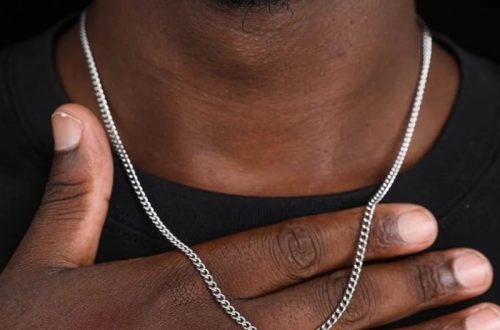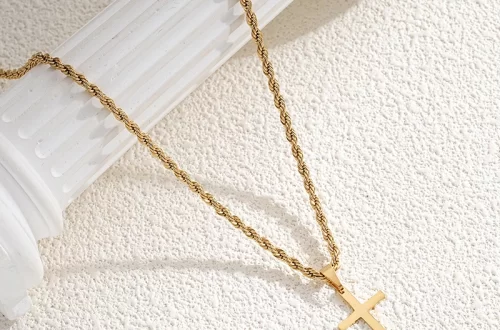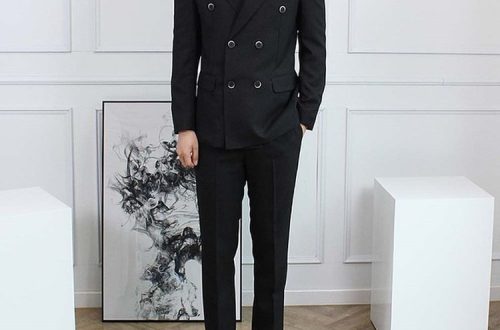What Are Trekking Pants and Why They’re Essential for Outdoor Enthusiasts
Men’s trekking pants are a staple in the wardrobes of hikers, campers, travelers, and adventure seekers. Designed with durability, flexibility, and weather resistance in mind, these pants offer far more than just comfort—they’re built to withstand rough terrain, unpredictable climates, and long hours on the trail.
Unlike standard jeans or casual trousers, trekking pants are engineered for movement. Most feature lightweight yet rugged fabric blends, multiple pockets for storage, UV protection, and moisture-wicking capabilities that make them ideal for extended outdoor wear. Whether you’re navigating mountain paths, exploring remote forests, or simply commuting through city streets, trekking pants provide the perfect balance between function and fashion.
Their increasing popularity among urban professionals and weekend warriors alike is due to their ability to transition from the wilderness to daily life seamlessly—making them a must-have for men who value practicality without sacrificing style.
How Trekking Pants Have Evolved Beyond the Trail
While originally designed for serious hiking and mountaineering, men’s trekking pants have found a place in everyday wear thanks to modern design innovations:
- Urban Commuting: Many models now resemble chinos or cargo pants, making them suitable for office environments or travel.
- Travel-Friendly Fabric Technology: Quick-dry, wrinkle-resistant materials ensure they pack well and maintain shape across long trips.
- Fashion Forward Appeal: Designers have incorporated sleek cuts, tailored finishes, and muted color palettes that blend into smart-casual settings.
- Gender-Neutral Styles: Unisex designs appeal to a broader audience, especially among minimalist and sustainability-focused consumers.
- Layering Potential: Easily worn under waterproof shells, insulated jackets, or over base layers for multi-season adaptability.
- Eco-Conscious Manufacturing: Brands like Patagonia, prAna, and Reformation are leading the way in sustainable trekking apparel.
This evolution has made trekking pants more than just trail gear—they’re now essential components of a versatile, modern wardrobe.
Types of Men’s Trekking Pants
Lightweight Hiking and Travel Pants
Lightweight men’s trekking pants are ideal for warm weather, summer hikes, and travel-friendly adventures where mobility and breathability take precedence.
Key features include:
- Synthetic Blends (Nylon, Polyester, Spandex): Offer stretch, UV resistance, and moisture management.
- Ventilation Zones: Mesh-lined thigh vents or laser-cut breathable panels help regulate body temperature.
- Packability: Many are compressible and fit into small spaces—perfect for backpacking or air travel.
- UPF Protection: Blocks harmful UV rays during prolonged exposure to sunlight.
- Quick-Drying Properties: Essential for crossing streams, sudden rain showers, or sweaty climbs.
These pants are favored by:
- Backpackers
- Trail Runners
- Photographers and Travelers
- City Commuters Seeking Breathable Daily Wear
They strike the perfect balance between agility and durability—ideal for those who want to move freely while staying protected from the elements.
Insulated and Cold-Weather Trekking Trousers
For colder climates or high-altitude treks, insulated trekking pants provide warmth without restricting movement.
Common variations include:
- Softshell Trekking Pants: Provide wind resistance, moderate insulation, and flexibility for dynamic movement.
- Hardshell Waterproof Trousers: Often used as outer layers in wet conditions—paired with thermal leggings underneath.
- Insulated Base Layers: Thermal trekking pants made from merino wool or synthetic fleece for extreme cold.
- Convertible Options: Some brands offer zip-off legs that convert into shorts for transitional seasons.
- Stretchy and Breathable Outerwear: Allows for full range of motion even when layered over other clothing.
Cold-weather trekking pants are commonly seen in:
- Winter Hikes and Snowshoeing
- Alpine Climbing and Ski Tours
- Urban Winter Wear for Active Lifestyles
- Camping and Backpacking in Cooler Climates
Whether heading into sub-zero temperatures or just layering up for an early morning hike, these pants ensure comfort and performance in harsher conditions.
Materials and Fabric Technologies Used in Trekking Pants
Common Fabrics and Their Performance Benefits
The fabric choice significantly influences how trekking pants perform across different terrains and climates:
- Nylon: Known for its abrasion resistance and lightweight nature—ideal for rugged trails and frequent use.
- Polyester: Offers excellent moisture-wicking properties and retains shape well after repeated wear.
- Spandex/Elastane Blends: Adds stretch and flexibility, allowing for deep squats, knee-high scrambles, or long-distance walks.
- Wool and Merino Wool: Natural insulators that manage odor and moisture effectively—especially popular in softshell and base-layer styles.
- Cotton Blends: Offer breathability but are heavier and slower to dry—best suited for mild climates.
- Recycled and Eco-Friendly Fibers: Many brands now use recycled nylon or polyester to reduce environmental impact.
Each material brings unique benefits, so choosing one depends on your activity level, climate, and preference for natural or synthetic fibers.
Innovations in Sustainable and Smart Fabric Technologies
With the rise of eco-conscious fashion, many manufacturers are incorporating advanced technologies into trekking pants:
- Water-Resistant DWR Coatings: Repel light rain and snow without being fully waterproof.
- Moisture-Wicking Treatments: Pull sweat away from the skin to keep you dry and comfortable.
- Odor-Resistant Finishes: Especially useful for multi-day treks where washing isn’t always possible.
- Thermal Regulation Fabrics: Some incorporate cooling or warming technology based on ambient temperature.
- Biodegradable and Recyclable Materials: Newer fabrics break down safely after years of wear, reducing landfill waste.
- Reinforced Knees and Seat Areas: High-stress zones receive extra stitching or thicker fabric to prolong lifespan.
These innovations make trekking pants not only functional but also environmentally responsible—appealing to conscious adventurers and fashion-forward travelers alike.
How to Choose the Right Trekking Pants for Your Lifestyle
Understanding Fit, Sizing, and Mobility Requirements
Finding the right fit is crucial for both comfort and performance:
- Slim Fit: Best for athletic builds or those who prefer a streamlined silhouette.
- Regular Fit: Balanced cut that provides room for movement without being overly baggy.
- Relaxed Fit: Ideal for larger builds or those who prioritize freedom of movement over aesthetics.
- Gusseted Crotch and Knee Articulation: Enhances mobility, especially for scrambling, climbing, or squatting.
- Waist and Inseam Accuracy: Always refer to brand-specific size charts and customer reviews when shopping online.
Taking the time to find the correct fit ensures your trekking pants enhance your journey rather than hinder it.
Selecting Based on Climate and Activity Level
Your environment and activity should guide your selection:
- Warm Weather Use: Look for lightweight, breathable fabrics with ventilation flaps or mesh lining.
- Cooler Conditions: Opt for softshell or fleece-lined trekking trousers that trap heat without bulk.
- Rainy or Wet Environments: Water-resistant or waterproof models protect against moisture and mud.
- Urban Trekking and Everyday Wear: Slimmer cuts with minimal pockets suit professional settings and casual outings.
- Multi-Day Expeditions: Prioritize durability, packability, and ease of cleaning for extended trips.
- Adventure Sports and Climbing: Reinforced knees and seat areas prevent tearing during intense physical activities.
By matching your trekking pants to your lifestyle and surroundings, you’ll maximize both comfort and utility.
Styling Tips for Wearing Men’s Trekking Pants
Casual Daytime Outfits
Men’s trekking pants shine brightest in casual daytime settings, where their versatility and comfort can be fully appreciated:
- With Hiking Boots or Trail Shoes: Keep it rugged with durable footwear that complements your adventure-ready look.
- Under Jackets or Hoodies: Add structure with a bomber jacket, denim vest, or light fleece for added warmth.
- Footwear Choices: Sneakers, loafers, or slip-ons complete the relaxed ensemble depending on the setting.
- Accessories: Watches, sunglasses, crossbody bags, and minimalist belts elevate the overall look without overpowering it.
- Color Coordination: Earth tones pair well with boots and backpacks; neutral colors like navy or gray work for urban wear.
This combination works well for weekend hikes, errands, or any occasion where comfort and practicality go hand in hand.
Elevated and Semi-Formal Looks
For more polished appearances, trekking pants can be styled to exude sophistication:
- With Button-Up Shirts or Sweaters: A crisp shirt tucked in creates a clean, elegant look.
- Statement Footwear: Oxfords, monk straps, or suede loafers enhance the overall dressiness of the outfit.
- Minimal Jewelry: Simple leather bracelets or cufflinks keep the focus on the pants without overpowering it.
- Clutch Bags or Structured Totes: Swap casual backpacks for sleek alternatives that align with the refined aesthetic.
- Hair and Grooming: Neatly styled hair and clean facial grooming complete the sophisticated appearance.
This approach allows you to enjoy the uniqueness of trekking pants while maintaining a professional edge suitable for dinners, creative offices, or travel events.



